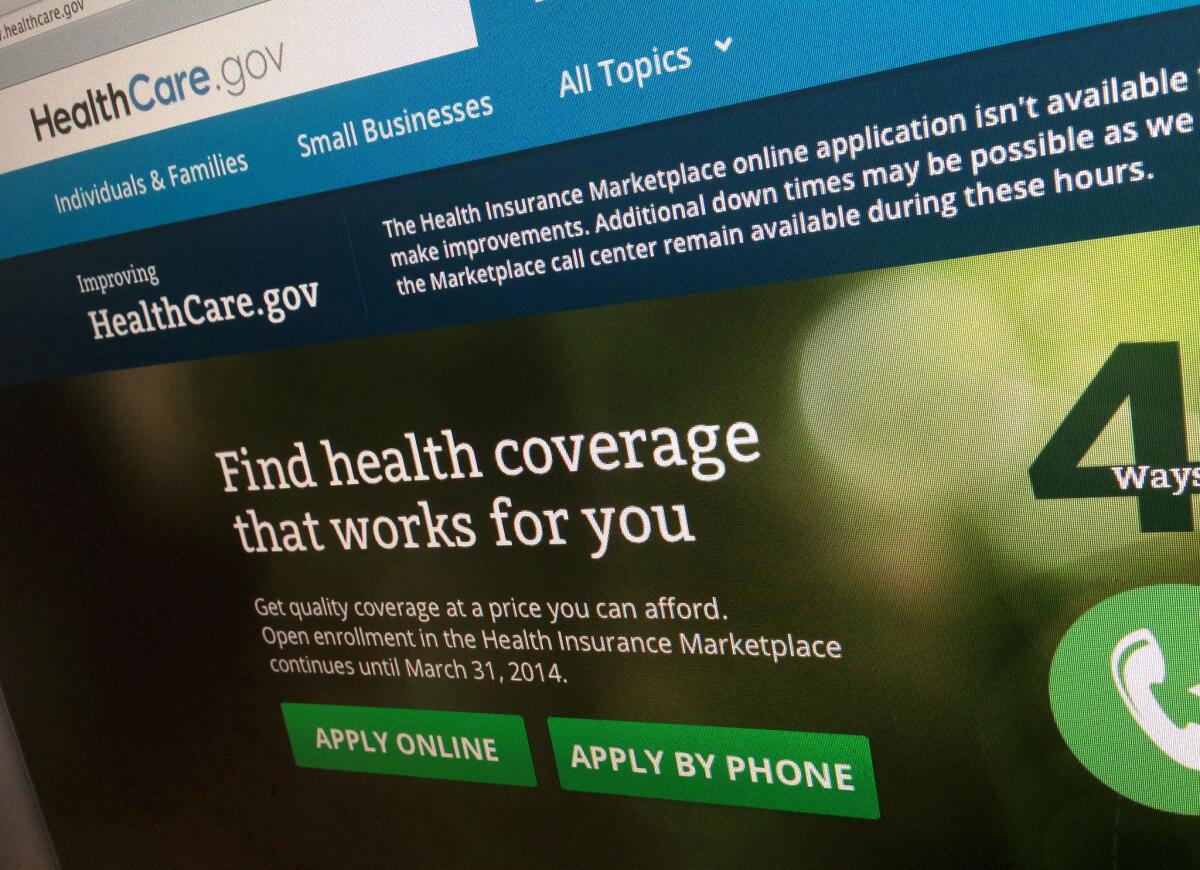Editorial: In California, good vital signs for Obamacare

Two pieces of news this week illustrated how much progress California is making on one of the main goals of the 2010 federal healthcare law, extending coverage to the uninsured. A new survey from the Kaiser Family Foundation estimated that the percentage of uninsured Californians has been cut in half thanks to the expansion of free and subsidized coverage for low- and moderate-income residents. And Covered California, the state’s new insurance market, announced a surprisingly small increase in the average premiums its customers will face next year.
As encouraging as these signs are, though, it’s still too early to declare the Affordable Care Act a success. The troubled launch of exchanges across the country brought to the surface a host of problems, some of which have yet to be resolved. The most important of these is making sure that the health plans people enroll in can deliver the care they promise.
The law required virtually all adult Americans to buy comprehensive health insurance starting in January 2014, while also expanding Medicaid to more low-income adults and offering subsidies through the new exchanges to low- and moderate-
income Americans. In California, Kaiser estimated, 3.4 million of the uninsured obtained coverage, largely through Medi-Cal (the state’s version of Medicaid) and subsidized private plans. Kaiser based that figure on the survey it did of Californians who were uninsured in 2013, a remarkable 58% of whom said they had coverage this year.
The survey also found, however, that the remaining uninsured present a bigger challenge. Almost 40% have never had insurance. About 30% are ineligible for subsidized plans because of their immigration status. And 34% said they can’t afford coverage, including some lower-income residents who can’t pay the monthly premium even with a subsidy. That’s because the subsidies phase out as a person’s income increases.
Clearly, healthcare affordability remains a concern. The broad coverage mandated by the law pushed the cost of insurance significantly higher for many people not covered by large employer plans. On the plus side, the preliminary 2015 premiums announced Thursday by Covered California are only 4.2% higher on average than the current year’s. Whether the slowdown in premium growth is sustainable remains to be seen, however, given that insurers have yet to have a full year’s experience with the new set of customers.
Nor is an affordable policy worth much if the plan doesn’t actually provide care when it’s needed. Covered California’s first go-round was marred by incomplete and inaccurate lists of the plans’ provider networks. Consumers have also complained that to get some types of care supposedly covered by their plans, they’ve been forced to use expensive out-of-network doctors and hospitals. Fixing these problems should be a priority for Covered California and state policymakers.
Follow the Opinion section on Twitter @latimesopinion
More to Read
Start your day right
Sign up for Essential California for news, features and recommendations from the L.A. Times and beyond in your inbox six days a week.
You may occasionally receive promotional content from the Los Angeles Times.






